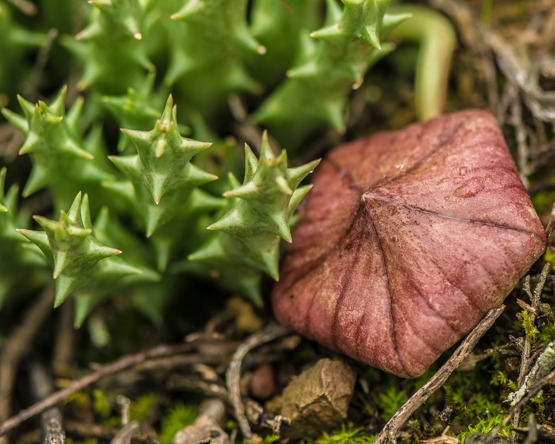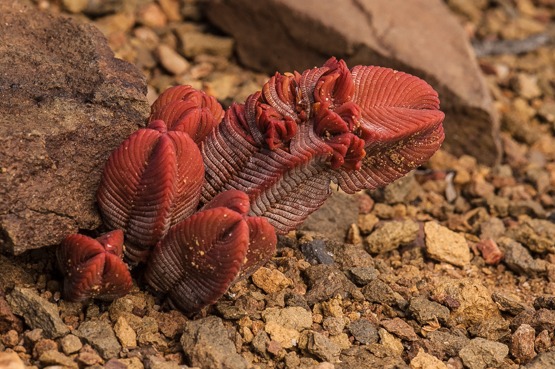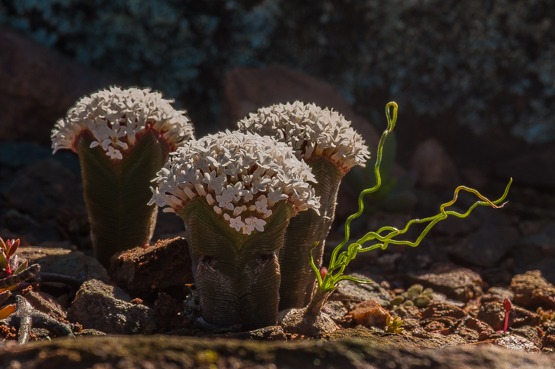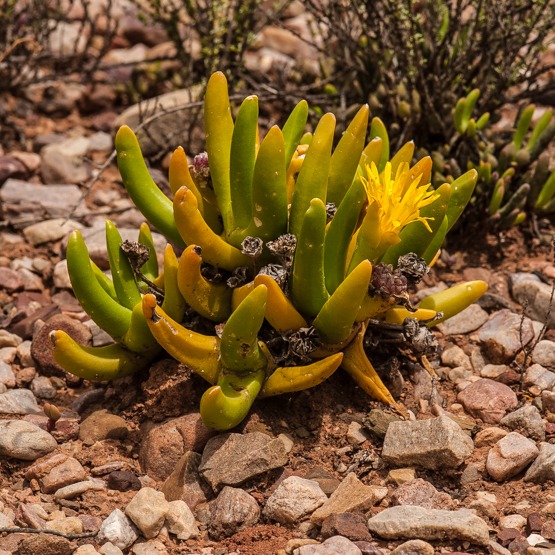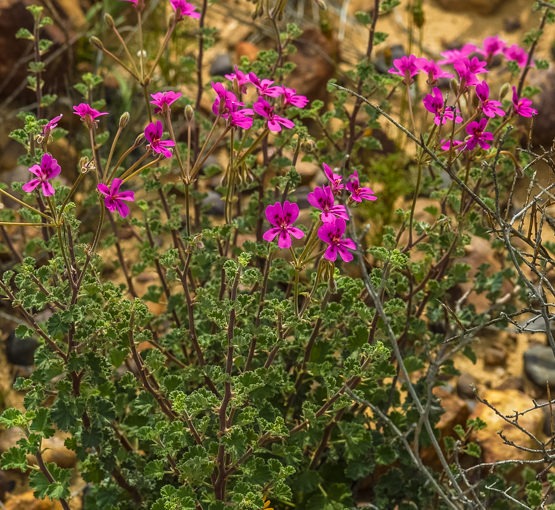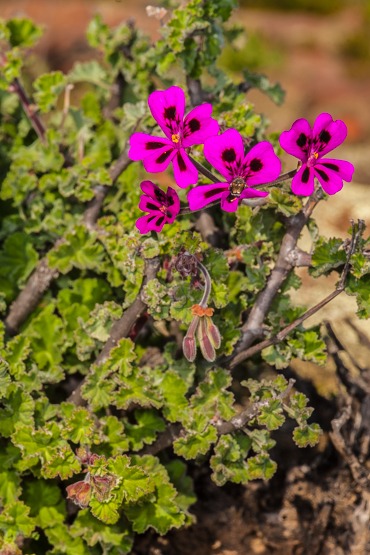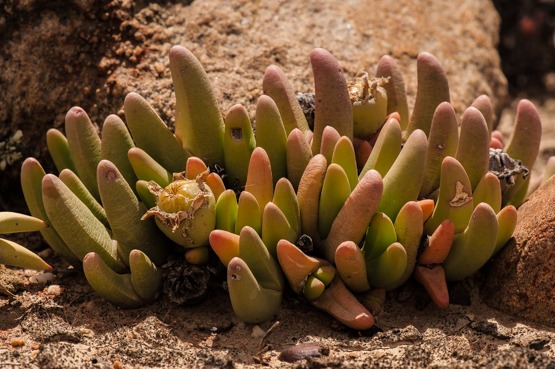Only three species of Cephalophyllum are known to occur in the Little Karoo and this is one of them; it also occurs somewhat more to the west, in the Worcester-Robertson Karoo. The other two are C. curtophyllum and C. purpureo-album.
With their short thick stems, the plants are rather more compact than most other Cephalophyllums. They form clumps up to 15 cm in diameter, the centres of which die off with age.
The dark green leaves are 5.5-8 cm long, triangular with a sharp point (subulatoides means awl-shaped).
In July-August the plants are decorated with magenta flowers about 3 cm in diameter. The staminodes are white.
The fruits are persistent; they have a rounded base and about 12 compartments.





